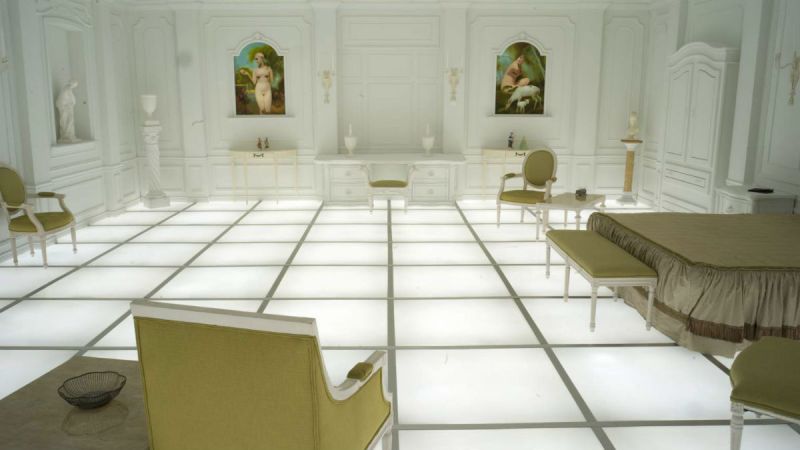
We’re not breaking new ground by saying that 2001: A Space Odyssey is one of the most iconic movies ever — for lovers of film, art, and space. The Stanley Kubrick and Arthur C. Clarke masterpiece was (is) transcendent, progressive, and decades ahead of its time. Now, thanks to Washington, D.C.’s Smithsonian Museum, we can appreciate the film in a whole new way: by stepping inside it.
To honor the landmark film’s 50th anniversary, the Smithsonian’s National Air and Space Museum has unveiled a meticulous, life-sized recreation of “The Barmecide Feast” by Hong Kong-based, British artist Simon Birch. The bedroom scene is among the most recognizable in film history: a beautiful, alien, and sterile melange of Louis XVI-style decor (including Renaissance sculptures and paintings) all set atop a cold, illuminated white floor.
Near the end of 2001: A Space Odyssey, cosmonaut Dr. David Bowman awakens unexpectedly in this bizarre bedroom. He proceeds to watch himself transition through various stages of life. Finally, as an old man lying in bed, he sees a black, imposing monolith at the foot of his bed. He reaches for it and suddenly becomes a wide-eyed fetus staring outward from inside a glowing orb of light. It’s largely because of this monolith — and this entire scene — that the film has endured as a subject of discussion for decades. What is the monolith? Where did it come from? Who are we and can we ever hope to move beyond this existential crisis?
That anyone was able to painstakingly recreate the set when Kubrick was known for destroying his immediately after filming is nothing short of a miracle. Even the production sketches of the original set designed by NASA-engineer Harry Lange were demolished after production wrapped in 1968. But, as luck would have it, Birch’s own architect, Paul Kember, had surprisingly close ties to the film. Two of Kember’s uncles were draftsman on the original set and had access to the reference materials necessary to recreate it. The only thing missing from the set is the looming black monolith.
The bedroom exhibit was previously on temporary display in Los Angeles at Simon Birch’s The 14th Factory in 2017. The Smithsonian reboot is hoping to draw even more attention and is encouraging visitors to photograph and share their visit on social media.
Admission to the one-of-a-kind exhibit is free. However, timed tickets must be booked in advance through the official Smithsonian National Air and Space Museum website. Groups of just six visitors will be allowed inside at a time, and only for two minutes. We imagine this will sell out very, very quickly, Dave.



